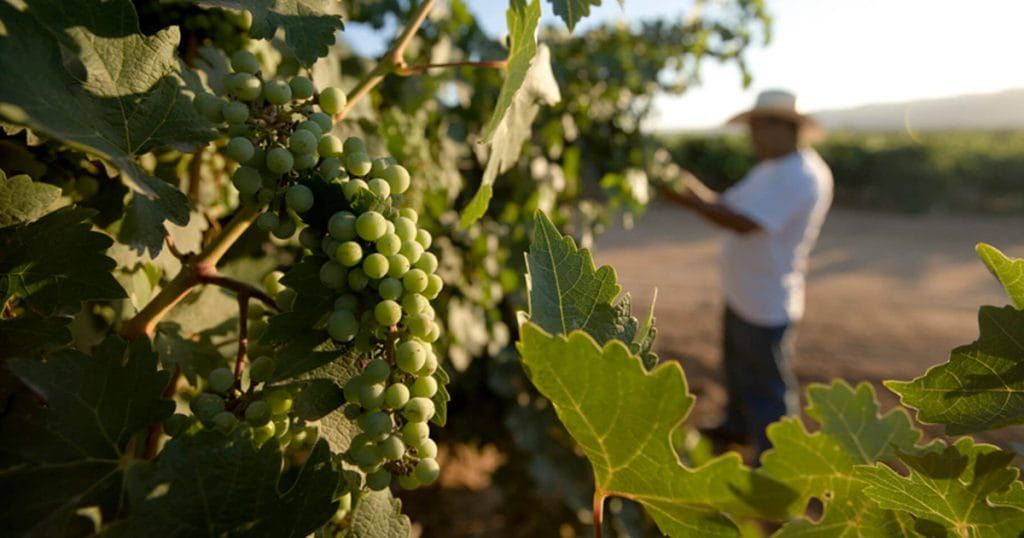The Mexican wine industry report 2020
The Mexican wine sector is suffering the devastation of the pandemic as sales have dropped due to the closure of wineries and the cancellation of wine tourism events.

The Mexican wine industry is suffering the ravages of the pandemic as its sales fell not only due to the closure of wineries but also by the cancellation of wine tourism events, however, producers found a way to avoid a greater impact through e-commerce.
Mexican winemakers are having a hard time. Although the industry in Mexico is new, the product being sold has been around for centuries and its great variety has caused more people in the country to drink it frequently.
In five years, the average per capita consumption of the drink doubled from 450 milliliters in 2012 to 960 milliliters in 2018, according to the latest figures available from the Mexican Wine Council (CMV). Annually, the value chain produces about 2.4 million boxes of wine, which is only enough to meet 30 percent of domestic demand, because Mexicans consume an average of 9 million boxes.
The Great Confinement will put much more pressure on an industry that faces a competitive market for other beverages that are deeply rooted among consumers: beer, tequila, and mezcal. And while the outlook looks challenging, producers took action in time to target the industry through the online sales channel in order not to be left behind.
Like many other sectors, this crisis hit especially the wine tourism sector, which had losses of 100 percent, so a lot of time was spent digitizing the stores and partnering with platforms to have new points of sale different from the traditional ones
Conquering new palates with Mexican wine
Traditionally, younger or newer drinkers preferred to drink beer, mezcal, or cocktails rather than ask for a glass of wine. However, with the passage of time, this tendency began to change, thanks to the fact that the wine industry itself was able to adapt to the demands of new palates.
As a matter of principle, producers decided to break with the traditional presentation of a glass bottle to produce more comfortable, attractive, and even more economical packaging.
From the beginning, canned wine caused a stir, since for the drink purists it brought down all the schemes that had existed for centuries.
Contrary to what was thought, the product went from being just a fad to becoming a powerful business that is valued at 45 million dollars and it is expected that in the following years the figure will double, according to the specialized firm Nielsen. Tetra Pak is another example of packaging, with manufacturers arguing that cardboard is not as aggressive to the environment. These two segments, canned and box, have been very well received by the millennials.
Mexico has 14 important wine regions with a total area of more than 30,000 hectares where grapes are harvested and grouped into five vocations for various uses.
One of them is used for juices and beverage juices which is concentrated in the states of Aguascalientes and Zacatecas in a territory of 4 thousand hectares; another one is the table grape that 80 percent of its production is in charge of producers in Sonora and 90 percent of what is harvested is exported mainly to the United States, and some European and Asian markets, according to data from the CMV.
One of them is used for juices and beverage juices which is concentrated in the states of Aguascalientes and Zacatecas in a territory of 4 thousand hectares; another one is the table grape that 80 percent of its production is in charge of producers in Sonora and 90 percent of what is harvested is exported mainly to the United States, and some European and Asian markets, according to data from the CMV.
The queen of all is the one destined for the production of alcoholic beverages. Around 70 percent of the wines in the country are made from 10 varieties of higher consumption. Some of them are Cabernet Sauvignon, which accounts for 20 percent; Merlot for 8 percent, while Syrah and Nebbiolo account for 5 percent, and Tempranillo for 4 percent.
The latest data available from Euromonitor reveals that the industry employs more than 7,000 people directly and indirectly. However, the CMV estimates that the cultivation of vines for wine, along with table grapes support more than 500 thousand agricultural workers throughout the country.




